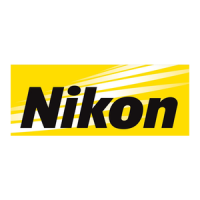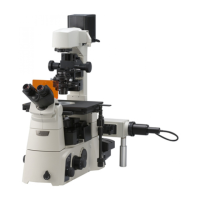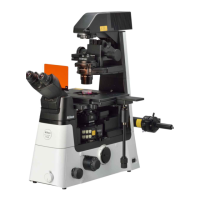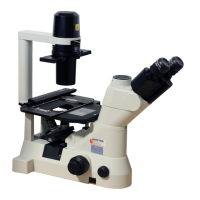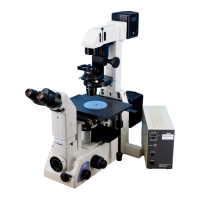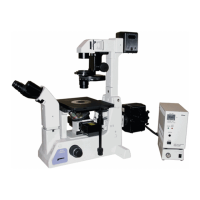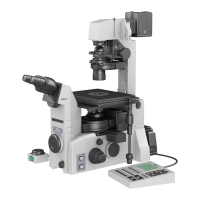Chapter 3 Operation
3.11 Objective Operation
73
3.11 Objective Operation
3.11.1 Phase Contrast Objectives
Figure 3-29 Phase contrast objective (example)
Phase contrast objectives are labeled with a “Ph
code” (PhL, Ph1, Ph2, or Ph3). When performing
phase contrast microscopy, use an annular
diaphragm or condenser cassette that has the same
Ph code as the objective, regardless of the
magnification of the objective.
3.11.2 Cover Glass Thickness
Figure 3-30 Cover glass thickness (example)
Objectives are labeled with the supported cover
glass thickness. For example, “∞/0.17” indicates a
cover glass thickness of 0.17 mm.
When observing at high magnification through
glass that is thicker than the supported glass
thickness (i.e. when observing a specimen in a
Petri dish), it is recommended that you use an
objective with a correction ring so that the optical
system can be adjusted accordingly. (See Section
3.11.3, “Objectives with Correction Ring”)
Glass thickness of 0.17 mm
Figure 3-31 Glass thickness of 0.17 mm
When using an objective labeled “0.17”, face the
cover glass downward, and set the specimen so that
the cover glass faces the objective. (The cover glass
has a thickness of 0.17 mm.)
Glass thickness of 1.2 mm
Figure 3-32 Glass thickness of 1.2 mm
When using an objective labeled “1.2”, face the
cover glass upward, and set the specimen so that
the glass slide faces the objective. (The glass slide
has a thickness of 1.2 mm.)
Ph code
(example: Ph2)
Cover glass
Glass slide
Glass slide
Cover glass
Cover glass thickness
(example:
∞
/0.13-0.20)
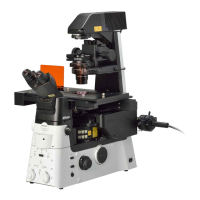
